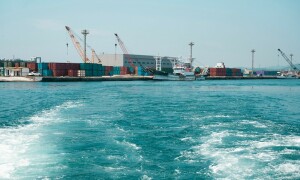Inflation in Saudi Arabia jumped to almost 10 percent in March, its highest since at least the oil boom of the 1970s, raising pressure on the state to offset price pressures on the oil exporter's 25 million people.
Inflation is a key challenge across the Gulf Arab region, where governments which peg their currencies to the ailing dollar are raising wages and subsidies, bringing in price controls and tightening lending curbs to dampen the impact of price rises.
In Saudi Arabia, the world's largest oil exporter, inflation accelerated for a 10th straight month to 9.6 percent in the year to March 31, compared with 8.7 percent in February, the state-run Saudi Press Agency (SPA) reported on Sunday.
Saudi inflation almost doubled in the six months to March, driven mainly by surging rents and food prices. The rental index of the largest Arab economy soared 15.8 percent in March, while food and beverage costs rose 14.2 percent. The rental index includes fuel and water costs.
"There is a greater level of disparity in living standards in Saudi Arabia and the government will be mindful about the impact of higher prices on the local population," said Monica Malik, senior economist in Dubai at investment bank EFG-Hermes.
Subsidies targeted to help lower income Saudis, state employee cost-of-living allowances and lower import levies on various food items are among measures Saudi Arabia has introduced to tackle inflation this year.
"Saudi Arabia is likely to continue to introduce more administrative measures because there's very little policy apart from that," said Malik, who says she intends to raise EFG's forecast for average Saudi inflation in 2008 from 9 percent.
DOUBLE-DIGIT INFLATION:
Price rises are plaguing the world's biggest oil-exporting region, where economies are surging on a near six-fold increase in oil prices during the last six years.
Dollar pegs force the Gulf Arab states, bar Kuwait, to track the United States in cutting interest rates. With the dollar tumbling this year to record lows against the euro and a basket of major currencies, some imports have become more expensive.
"I think we will see double-digit inflation figure in April," said John Sfakianakis, chief economist at SABB bank, HSBC's Saudi affiliate.
Food prices, which account for about 26 percent of the cost of living index, are a "source of concern" in the major importer of food products, he said, adding that rents account for 18 percent of the index.
The combination of rising prices and falling purchasing power has already triggered riots by migrant labourers in the United Arab Emirates and Bahrain.
But although currency reform could help ease inflation, it will not solve the problem largely fuelled by high global food prices, analysts said.
In Kuwait, which severed its link to the dollar in May and has allowed its dinar to rise almost 9 percent, inflation more than doubled in the seven months to January to 9.5 percent. Inflation is also at just off a record 13.7 percent in Qatar and crossed 10 percent in Oman in the first two months of 2008.
Saudi inflation could top 10 percent before easing in the second half as lower global demand for commodities feeds into prices, the central bank governor said last week.
The Saudi central bank, for its part, has raised bank reserve requirements three times since November to 12 percent from 7 percent to prevent banks from lending more. Saudi M3 money supply growth eased to 23.04 percent in March, just off at least a 14-year peak a month before, data obtained by Reuters on Sunday showed
BR100
12,702
Increased By
113.8 (0.9%)
BR30
38,258
Increased By
378.2 (1%)
KSE100
118,383
Increased By
1067.8 (0.91%)
KSE30
36,395
Increased By
278.8 (0.77%)






















Comments
Comments are closed.